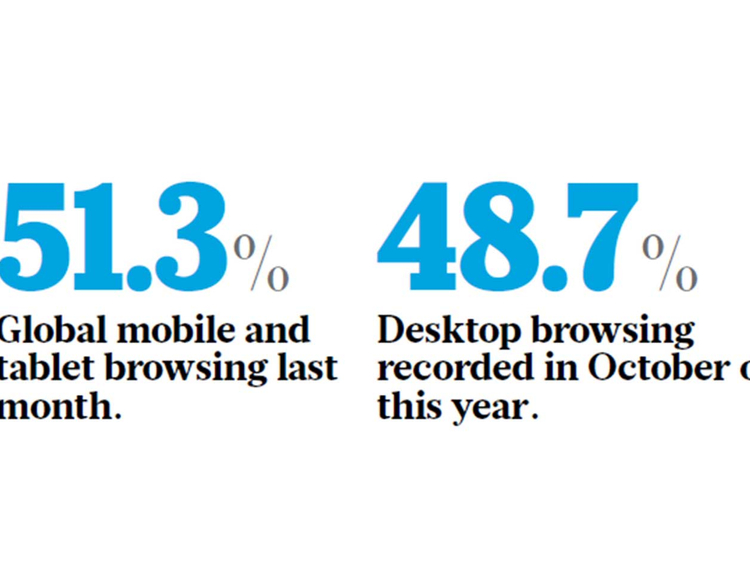
London: Mobile devices are used more than traditional computers for web browsing, as smartphone and tablet use overtook desktop for the first time, October figures show.
Mobile web browsing has been steadily growing since 2009, while the desktop’s share of web traffic has steadily decreased.
In October, the two crossed over, with global mobile and tablet browsing accounting for 51.3 per cent versus the desktop’s 48.7 per cent, according to the latest data from web analytics firm StatCounter.
Aodhan Cullen, chief executive of StatCounter, said: “This should be a wake-up call especially for small businesses, sole traders and professionals to make sure that their websites are mobile friendly. Many older websites are not.
Mobile compatibility
“Mobile compatibility is increasingly important not just because of growing traffic but because Google favours mobile-friendly websites for its mobile search results.”
Despite following a similar downward trend, the desktop is still king in some parts of the world. In the UK, the desktop accounts for 55.6 per cent of browsing, 58 per cent in the US and 55.1 per cent in Australia, according to StatCounter, but it seems only a matter of time before they follow the global trend, with mobile taking the majority of web browsing.
The Guardian’s data indicates that an on an average weekday, just over 40 per cent of visitors to the site are reading on a desktop, while that number drops to just under 30 per cent on a weekend. The rest are using a combination of mobile browsers on a tablet and smartphone, or the Guardian mobile app.
Google identified the trend towards mobile browsing several years ago and has since accelerated the shift with changes to its search favouring mobile.
It began ranking sites within its search index by mobile accessibility in 2015 and recently made a change making mobile search potentially more up to date than desktop.
At the same time, PC sales have been in decline for years, while smartphones have reached at least 80 per cent saturation within most developed markets and have become the sole point of access to the internet for many in developing nations.
— Guardian News & Media Ltd, 2016












